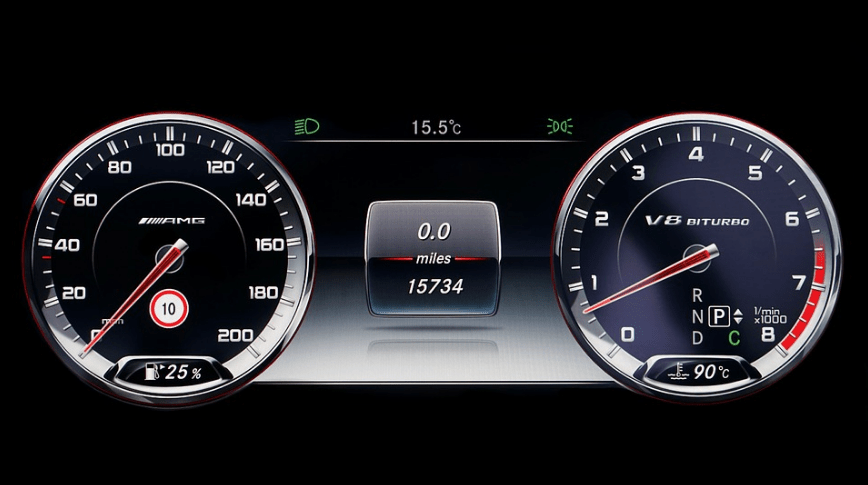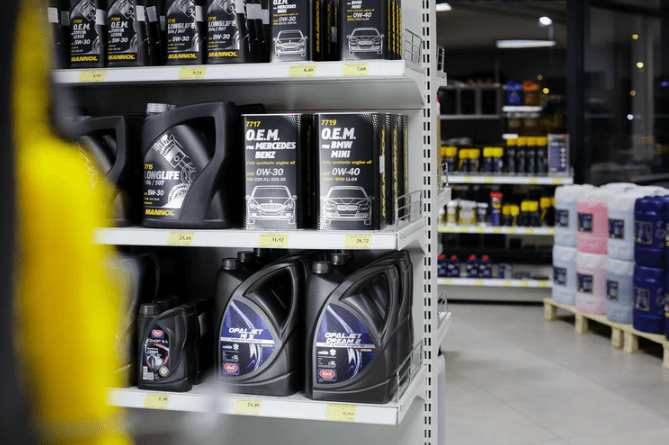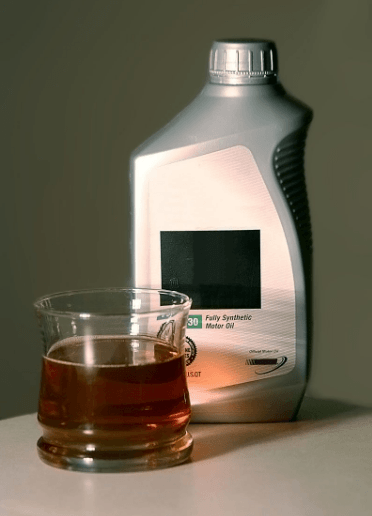Every car engine requires oil but a specific type. Modern engines are developed and manufactured with particular standards, needing oils that satisfy industry’s and manufacturer’s criteria to assure a long service life. Unfortunately, if you don’t use the correct type of oil and document its use, it can also void your car warranty.
Most brand new cars require synthetic-blend or full-synthetic, minimal, multi-grade lubricants that reduce friction while increasing the fuel’s efficiency.
Choosing the right type of oil, on the other hand, is not always easy. The right oil for your vehicle’s make and model should have the correct SAE viscosity grade, meet API, ILSAC, or ACEA performance requirements and conform to any other guidelines and specifications specified by the maker or engine manufacturer.
These guidelines and requirements are all given in the manufacturer’s guide; your auto repair shop can also help you offer more information on your car’s recommended oil needs.
The oil change varies depending on the age of the vehicle, type, and driving patterns. For example, earlier, it was normal to replace the oil every 3,000 miles, but the manufacturers now have suggested oil change intervals, ranging from 5,000 to 7,500 miles with the latest lubricants.
Furthermore, if your car’s engine demands full-synthetic oil, it may last up to 15,000 miles between oil changes. In any case, you should stick with the manufacturer’s maintenance plan regarding oil changes.
Tips for Changing Your Car Oil
1. Know When To Check the Oil Level
You should check the oil levels in your car regularly. Even newer vehicles may require oil levels to be checked out regularly in-between oil changes. Therefore, you should check your oil level at least once a month. In addition, make sure to take care of the repairs as soon as possible when you notice something, such as a leak.
Check with the manufacturer’s handbook and follow the instructions. Latest vehicles have electronic oil monitors rather than traditional dipsticks for checking the oil. If you have a dipstick, ensure that the car is parked on level ground before checking it. Also, be careful of any hotspots beneath the hood if the engine has been running.
2. Keep An Eye Out For Dashboard Lights
You should ideally keep track of how many miles you have driven between oil changes. Latest vehicles have this option more accessible with a dash indication that alerts you when it’s time to go to the auto shop. These systems help track the mileage and use data from your driving, diagnosed by your car’s computer, to determine when to change the oil.
When the check light is on, it’s best to replace the oil as soon as possible, although it’s not always necessary. If the car has an oil monitoring mechanism, keep in mind that this light is not the same as your oil pressure light.
The pressure light glows on your dashboard if your vehicle’s oil isn’t flowing correctly due to a low level, a malfunctioning oil pump, a leak in the system, or another issue. You should know the difference between the two dash lights, so in case the oil pressure light comes on, you must stop driving as soon as possible to avoid engine damage.
3. Know the Right Time to Change the Oil
The manufacturer’s manual that you get with your vehicle has the instructions on the recommended time to change the oil. Don’t rely on the intervals based on previous experiences with another vehicle because the recommended oil change durations have been altered over time due to advancements in technology.
Many cars, pick-up trucks, and SUVs now include service reminder monitors that notify drivers when it’s time to change the oil. That is why you need to make sure you change your oil ASAP when you get the reminder.
4. Know the Frequency of Oil Changes
Some cars have that “every 3,000 miles or three months” guideline, but advancements in engines and oil types have made that rule outdated. Instead, many car makers recommend an oil change at 7,500 or even 10,000 miles and time intervals of 6 or 12 months.
If you get your oil changed every 7,500 miles instead of every 3,000 miles over two years and 30,000 miles, you can save $360. It’s not about the miles; even if you don’t drive your car much, you should change your oil regularly. Hence why it’s either by mileage or monthly basis.
5. Choose the Right Type of Oil
You should consult with an experienced mechanic to determine what kind of oil your car needs. If you don’t need synthetic oil, don’t buy it. Instead, make sure to know what your carmaker recommends or needs before you see your technician. This way, you can manage the cost of the oil.
You don’t need to get a special oil if your car is already running well with your current oil. However, if you are not sure which oil you should get, you can contact your local dealer to get more information.
6. Know About Synthetic Oil
You should only use synthetic oil if your car needs it and the manufacturer asks recommends it because it can cost two to three times more than the regular oil. In addition, synthetic oil is made to be more resistant to breakdown and to endure high temperatures. In different situations, the resistance to breakdown might help in extending the life of your car’s engine exponentially.
If you make many short trips, the standard engine oil will do as it won’t become as heated to burn off the moisture and contaminants, which means it will be sufficient to protect your engine. Similarly, another thing to consider would be your area’s climate, along with your driving habits. For example, suppose you live in a region with freezing winters or hot summers or use your vehicle for hauling or towing heavy material. In that case, synthetic oil is best for you.
7. Know When to Change the Synthetic Oil
Synthetic oil remains more effective for a longer time than regular oil due to its constant molecular arrangement and lack of impurities. In addition, it has a longer oil-change period compared to a standard engine oil due to its resilience and quality. Sure, you can say that synthetic oil is more expensive than conventional oil, but it pays off in the long run between oil changes.
If a traditional oil change costs around $35 for 5,000 miles, a synthetic oil change can cost up to $45 for 10,000 miles. It adds up to make synthetic oil the most cost-effective option over time, after less than a year of driving. Some makers even recommend 15,000 miles between oil changes, but you should check with the car’s manufacturer regarding the oil again.
8. Check the Oil’s Viscosity
Viscosity is a scientific term that means the thickness of the oil. Viscosity, in other words, is the measure of its resistance to deformation at a given rate or, more simply, a fluid’s resistance to flowing smoothly.
High viscosity fluids like molasses are more difficult to flow than low viscosity fluids, much like water which flows freely. As a result, the viscosity measurement on the oil bottle represents its resistance to flow at a specific temperature. Therefore, you should check the oil’s viscosity before changing it. If it is thick as new and looks fresh, you can maybe give it a little more time in the engine.
9. Change the Oil Filter on Time
The above points won’t matter if you don’t remember to change your oil filter. Even the best synthetic oil will gather impurities and lose viscosity if the oil filter becomes clogged and enters bypass mode. This allows the oil to circulate without being filtered, allowing pollutants to go through and cause damage to the internal parts of your car’s engine.
Changing the oil filter on time is inexpensive and an efficient part of the car maintenance procedure. Steel spin-on canister filters have been used for a long time because of their low cost, effective filtration, and ease of repair. However, as engine compartments got smaller, the cartridge types became more popular, accounting for around 20% in the markets.
Changing the Oil – Basic Car Care Tips
It’s necessary to change the oil every 6 to 12 months or after certain miles recommended by the manufacturer or mechanic. If you are not using your vehicle, you should still change the oil regularly to keep it in excellent running condition.







